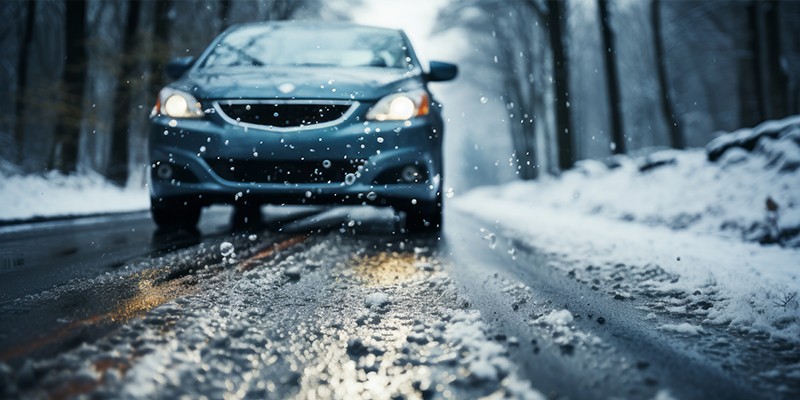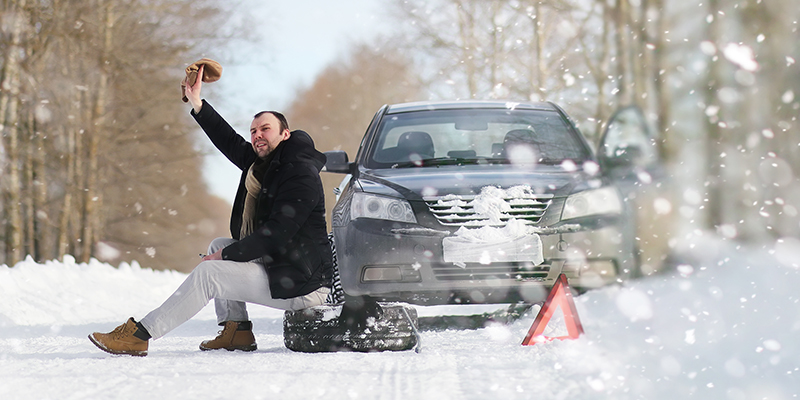Top Tips For Driving In Wintry Conditions
Top Tips For Driving In Wintry Conditions

From coping with a skid to choosing the right gear, these straightforward actions will give you confidence in even the most challenging road conditions.
Recent mild temperatures have been replaced by freezing temperatures in most parts of the UK, resulting in more difficult conditions for motorists.
As the temperature plummets, drivers are forewarned to expect slippery and icy road conditions and to ensure they are prepared for wintery weather. The temperature change comes after a survey found that icy road conditions were the main reason that would put motorists off from driving.
Recent research from tyre manufacturer Goodyear found that 41% of drivers would be worried about icy road conditions or would prefer not to drive at all on icy roads. However, while the UK’s usual winter conditions could be problematic for some motorists, the following easy steps can help alleviate their anxiety and make them feel more confident and comfortable in trickier conditions.
Ash Jackson from Fleet UK emphasises: “The main thing is to keep calm, allow sufficient time for journeys and keep your driving manoeuvres as smooth as possible". To help motorists feel more confident and safer during winter, no matter what the conditions are, Ash has the following advice:
DON'T USE CRUISE CONTROL
You should avoid using cruise control on any slippery surface, as this raises the chances of sliding, and it's best to be entirely in control of your car when driving in wintery conditions.
STOP THE SKID
In icy or slippery conditions, you have a greater chance of skidding. However, if you skid, try to keep your nerve and not panic - come off the throttle and evade the urge to brake hard. Whether it's best into or with the skid depends on the type of skid and what electronic aids your car has to assist you in straightening up and regaining control.
GET IN GEAR
To decrease the chances of losing grip in ice and snow, Ash recommends driving away in second gear and gently taking your foot off the clutch to
avoid wheel spin. Move up into a higher gear as quickly as possible and try to maintain a constant speed, as this will provide a better grip on the road when driving on slippery or icy roads. Remember, though, that gear changes must be done carefully and keep them slow and smooth.

KEEP YOUR DISTANCE
When driving on ice, stopping distances can be ten times longer than in better road conditions, so keeping a bigger distance between you and other cars – usually around ten car lengths is crucial.
BUY THE RIGHT TYRES
Motoring laws stipulate that you must have a minimum of 1.6mm tread depth, but Ash recommends between 4mm and 8mm for wintery road conditions. Please do not let air out of your tyres to try and get more grip, as this doesn't work and is dangerous. As an alternative, consider using all-season or winter tyres, as they are constructed out of special rubber, providing improved grip in wet and cold conditions.
PREPARE AN EMERGENCY KIT
You never know when a road emergency can happen, so it's always worth storing an essential winter emergency kit in your car. Some key items include a torch (and batteries), a first aid kit, blankets, food, and drink.
Please take a look at our recent article, which details what to keep in your car during winter.

USE YOUR LIGHTS
Visibility is essential to your safe driving, and you need to consider not just your car windows. Ensure all of the lights on your vehicle are in working order and be ready to use your headlights during the daytime if visibility is reduced. This not only improves your ability to view the road ahead, but it also helps other road users see you. To check your headlights, fog lights and taillights, switch them on, then walk around the vehicle and confirm they’re all bright and working. To check brake lights, you can ask a family member or friend to check for you or use reflections.
KEEP YOUR CAR WINDOWS CLEAN AND CLEAR
Rule 229 of the Highway Code declares that you must be able to see clearly through all windows and mirrors in your car, so please ensure you completely demist and defrost your vehicle before setting off. Try to give yourself sufficient time to do this and ensure you have complete visibility.
Does your car need a winter vehicle check? Check why you should get your vehicle prepared for winter here.
Need help with buying or leasing a new vehicle? Call Fleet UK on 02392 245570 or email sales@fleetuk.com, and you will be provided with a dedicated account manager who will help source the right vehicle for your needs.
